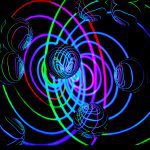Since the very beginning of civilization, men have had an irrepressible curiosity about planets in the solar system. They have always wondered about what these planets look like. We don’t know how many people have drawn imaginary pictures of these planets in the canvas of their eyes, but we can surely guess that the number is huge. With the passage of time, science has paved the way for the termination of almost all sorts of mystery and imagination. Through exploration and scientific investigation, much like a student exploration photosynthesis lab, we are able to uncover the factors that shape our understanding of both life processes on Earth and the colors of distant planets.
And chemistry has always been there with the explanation! Let’s have a look at how chemistry explains why planets possess different colors!
Thanks to the technological development and advancement of science in the last hundred years, our perception about the planets in our solar system has improved a lot. We have been able to identify which color a planet possesses and at the same time we can also understand why it does so.
What is more satisfactory is we can identify the colors not only of the planets which are close to the sun but also of the ones that are located far away from the sun.
Which color a planet appears as mainly depends on two factors.
The chemical substances its surface is made of
Absorption and reflection of sunlight by the surface or the atmosphere

Planets of the solar system infographic illustration
Earth
If you look at earth from space, you can see beautiful blue oceans, green land and brown soil. But as you all know, the earth’s surface is predominated by water. To be specific, almost 71% of the surface is occupied by water and the other 29% is made up of lands. Now, water absorbs the radiation from the sun. We know that the radiation of light that the sun emits is white in color. White is a combination of seven colors (violet, indigo, blue, green, yellow, orange, and red). Now the water on earth’s surface absorbs six out of these seven colors and reflects only blue. That is why earth appears as blue when looked at from space.
If you wonder how this is related to chemistry, you better know water is a chemical substance, and had the surface been covered mostly with some other chemical compounds other than water, the earth would not have looked blue!
Mercury
Mercury’s surface is believed to contain a lot of dust and is rocky in nature. The dust is so much in quantity that the surface is actually covered with a layer of dust. As you all know, dust is composed of a lot of silicates, leading the surface to appear brownish-grey in color.
One interesting thing about mercury’s surface is that it is very similar to that of the moon.
Venus
Venus is in fact the largest of the earth’s nearby planets. Its surface is also rocky and grey in color. But when you look at venus from space, you may observe yellowish-white clouds. The color of the clouds is due to the presence of sulphuric acid. Again the presence of sulphuric acid comes into being because venus possesses a very dense atmosphere. There is also a lot of carbon dioxide in its atmosphere.
Therefore we can come to a conclusion that it is the combination of contribution from the carbon dioxide in the atmosphere and the sulphuric acid in the clouds which is responsible for venus to appear as yellowish-white.
Mars
The surface of Mars contains a high concentration of iron oxide. In other words, we can say that the surface of Mars is covered by dust particles, which contain a lot of iron oxide. This is what is responsible for the reddish-orange appearance of Mars.
The reddish-orange glow of its surface can be distinguished from the earth, making it the worthiest candidate of the name it is called by, the Red Planet.
Jupiter
Jupiter is the largest planet in the solar system. Its atmosphere is mainly made up of two of the lightest gases – hydrogen and helium. That is why, this planet is considered as a gas giant. The entire planet is surrounded by a large band of clouds of different colors (eg, red, brown, yellow, orange, and white). Again this large band forms due to the presence of elements like ice crystals, ammonia crystals, water droplets, and the like.
It should not be out of place to mention that Jupiter has a red spot that can be observed from the earth with the help of a telescope.
Saturn
Like Jupiter, Saturn is also considered as a gas giant. Its atmosphere is made up of hydrogen-helium, a trace amount of hydrocarbons, steam, ammonia, and phosphine. All these chemical substances contribute to its having a yellowish-brown appearance. You must have heard of Saturn’s rings. These rings are made up of ice crystals and are of the same appearance as the planet itself.
However, colors of these rings can vary with concentration and in case other materials are present unusually.
Uranus
Uranus has a greenish-blue appearance. It is due to the presence of methane gas in the atmosphere. However, the atmosphere is mainly made up of hydrogen and helium. Uranus is the coldest of all the planets as it has an icy layer of clouds around it.
It might surprise you that the temperature of the cloud can get even below -200° celcius.
Neptune
Neptune’s atmosphere is also made up of hydrogen and helium. But much like Uranus, Neptune also possesses methane gas in its atmosphere. Neptune therefore also appears as blue.
Methane gas in the atmosphere absorbs red light and reflects only blue.
Without chemistry, reasons behind planets’ having different colors cannot be explained,
for you all can see – chemistry here, chemistry there- chemistry everywhere!







